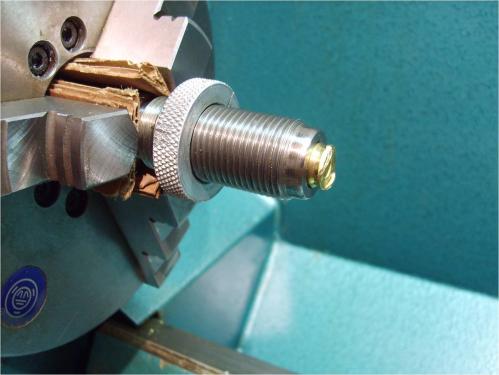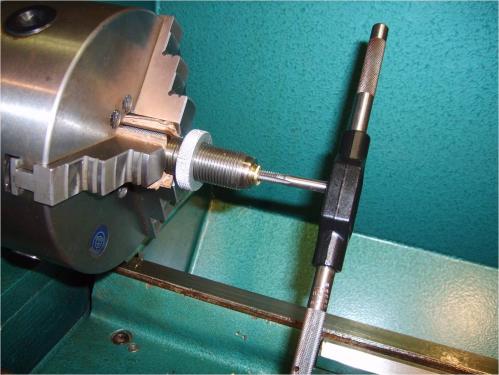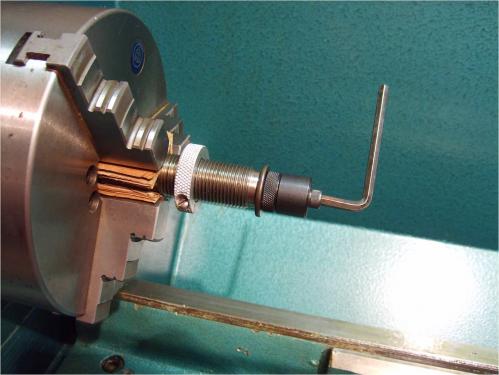10-16-2014, 10:21 AM
I am trying a new reloading technique to create ammunition that is consistently concentric. So far my rifles all like ammunition that is loaded at .003 TIR or less. To do that I need to start with cartridge cases that have as little runout after resizing as possible. The method I am experimenting with is very simple. First I resize the case with the decapping rod in place but the expander ball is removed. This sizes the case and neck concentrically and pops out the primer. The second step is to put the expander ball back on the decapping rod and raise the decapping assembly up inside the sizing die nearly as high as it will go. Then the previously sized case is run back up in the die and the case us pushed over the expander ball (instead of pulled like usual). For this .270 Winchester so far this has given me cases that are consistently less than .002" of runout at the case neck.
The problem I had was that in the second step the cases still needed a little lube on them even though they had already been resized. I thought they had enough residual lube on them from the first operation but some was removed when I ran them through my RCBS Case Master concentricity gauge. At about case number 15 I felt the dreaded snap as the shellholder tore off the rim of a stuck case!
That shut me down for the night and here are the pictures of the procedure to pull the stuck case.
I used the 3-jaw chuck in my lathe as a vise to hold the die with the stuck case. Three cardboard shims were used to protect the threads of the sizing die.

Next I drilled the case head with a No. 7 drill and tapped it to 1/4-20.

Then I used a 1 1/2 inch long socket head cap screw, a steel bushing and a hardened washer to pull the stuck case.

Here is the culprit removed and you can see the undamaged resizing die in the background. I will make sure to use enough lube the next time I do this. I have been reloading since 1975 and this is first time I have had a stuck case.
The problem I had was that in the second step the cases still needed a little lube on them even though they had already been resized. I thought they had enough residual lube on them from the first operation but some was removed when I ran them through my RCBS Case Master concentricity gauge. At about case number 15 I felt the dreaded snap as the shellholder tore off the rim of a stuck case!
That shut me down for the night and here are the pictures of the procedure to pull the stuck case.
I used the 3-jaw chuck in my lathe as a vise to hold the die with the stuck case. Three cardboard shims were used to protect the threads of the sizing die.
Next I drilled the case head with a No. 7 drill and tapped it to 1/4-20.
Then I used a 1 1/2 inch long socket head cap screw, a steel bushing and a hardened washer to pull the stuck case.
Here is the culprit removed and you can see the undamaged resizing die in the background. I will make sure to use enough lube the next time I do this. I have been reloading since 1975 and this is first time I have had a stuck case.
JScott, proud to be a member of MetalworkingFun Forum since Mar 2014.





 ). I drilled and tapped a 2-56 hole in the end of the pin (the pin was 18-8 SS) and pulled it out using a bushing and screw.
). I drilled and tapped a 2-56 hole in the end of the pin (the pin was 18-8 SS) and pulled it out using a bushing and screw.![[Image: TomsTechLogo-Profile.png]](http://tomstechniques.com/wp-content/uploads/2013/11/TomsTechLogo-Profile.png)



